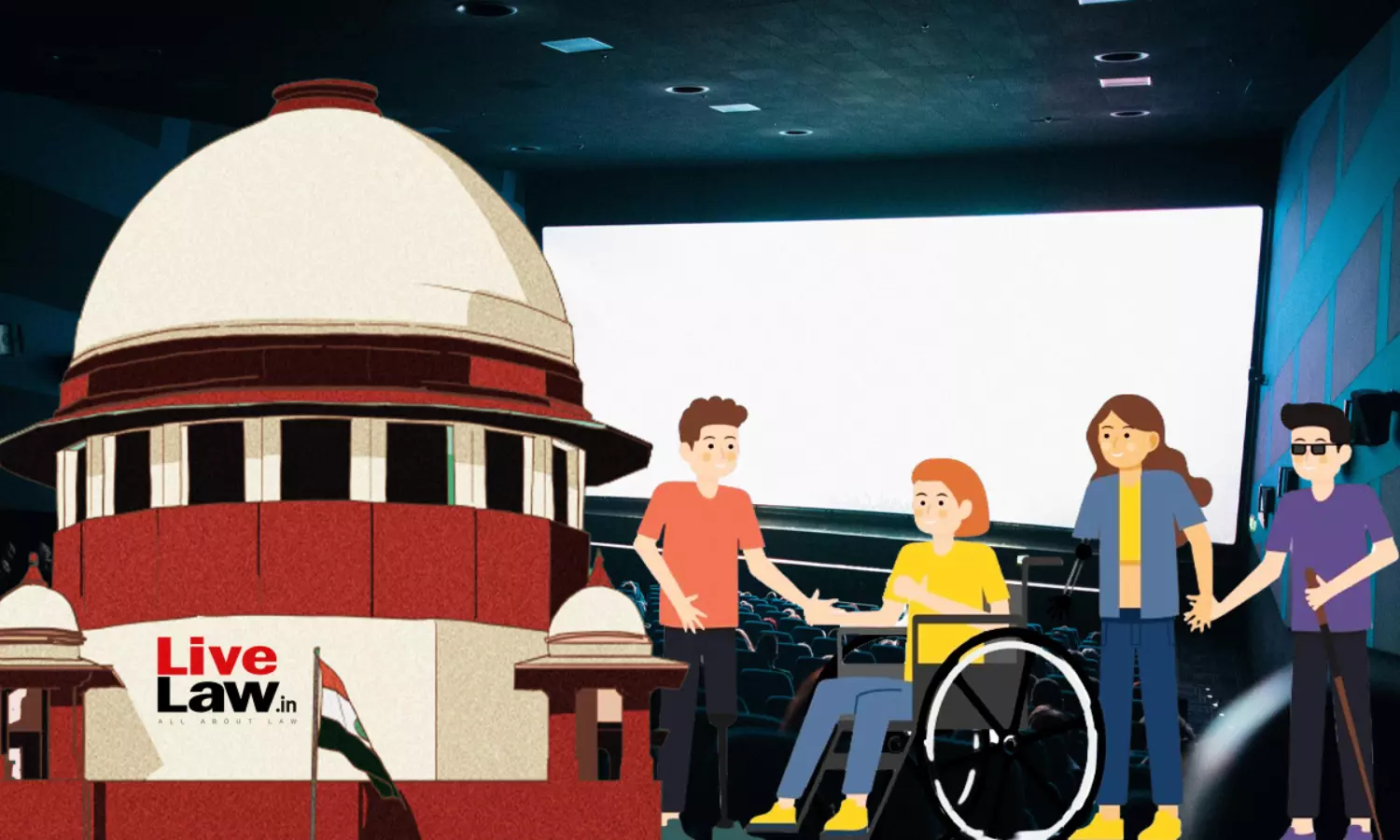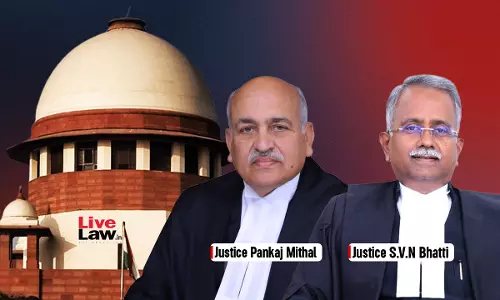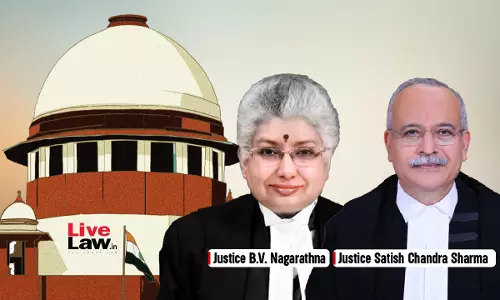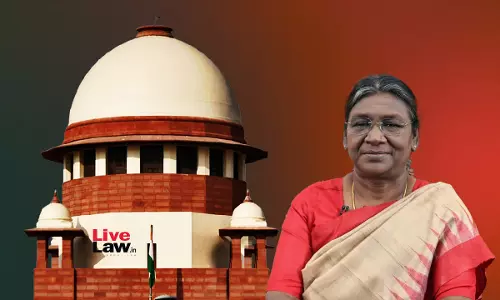'They Must Not Be Lampooned' : Supreme Court Issues Guidelines To Visual Media For Portrayal Of Persons With Disabilities

In a notable judgment delivered today, the Supreme Court has issued a set of guidelines to the visual media to ensure a dignified portrayal of persons with disabilities. The Court stressed that portrayals which carry negative stereotypes about persons with disabilities would impact their dignity and perpetuate social discrimination against them.A bench comprising Chief Justice of India...
In a notable judgment delivered today, the Supreme Court has issued a set of guidelines to the visual media to ensure a dignified portrayal of persons with disabilities. The Court stressed that portrayals which carry negative stereotypes about persons with disabilities would impact their dignity and perpetuate social discrimination against them.
A bench comprising Chief Justice of India DY Chandrachud, Justices JB Pardiwala and Manoj Misra was hearing a challenge to the portrayal of disabled persons in the film 'Aankh Mihcoli' produced by Sony Pictures. The petitioner sought guidelines against filmmakers, regarding the provisions of the RPwD Act and the composition of the Board and the Advisory panel under the Cinematograph Act and recommendations to beep certain parts of the present film as well.
While refusing to interfere with the certification granted by the Central Board of Film Certification, the Court used the opportunity to "provide a framework of the portrayal of persons with disabilities in visual media that aligns with the anti-discrimination and dignity- affirming objectives of the Constitution as well as the Rights of Persons with Disabilities Act."
Highlighting that the representation of persons with disabilities must not lead to their marginalisation, the judgment authored by CJI DY Chandrachud stated :
"As long as the overall message of the film justifies the depiction of disparaging language being used against persons with disability, it cannot be subjected to restrictions beyond those placed under Article 19(2). However, language that disparages persons with disabilities, marginalises them further and supplements the disabling barriers in their social participation, without the redeeming quality of the overall message of such portrayal must be approached with caution. Such representation is problematic not because it offends subjective feelings but rather, because it impairs the objective societal treatment of the affected groups by society.129 We believe that representation of persons with disabilities must regard the objective social context of their representation and not marginalise persons with disability."
The Court issued the following guidelines :
(i) Words cultivate institutional discrimination. Terms such as “cripple” and “spastic” have come to acquire devalued meanings in societal perceptions about persons with disabilities. They contribute to the negative self-image and perpetuate discriminatory attitudes and practices in society;
(ii)Language that individualises the impairment and overlooks the disabling social barriers (e.g. terms such as “afflicted”, “suffering”, and “victim”) should be avoided or adequately flagged as contrary to the social model130;
(iii)Creators must check for accurate representation of a medical condition as much as possible. The misleading portrayal of what a condition such as night blindness entails may perpetuate misinformation about the condition, and entrench stereotypes about persons with such impairments, aggravating the disability;
(iv)Persons with disabilities are under-represented. Average people are unaware of the barriers persons with disabilities face. Visual media must reflect their lived experiences. Their portrayal must capture the multitudes of their lived realities, and should not be a uni-dimensional, ableist characterisation;
(v) Visual media should strive to depict the diverse realities of persons with disabilities, showcasing not only their challenges but also their successes, talents, and contributions to society. This balanced representation can help dispel stereotypes and promote a more inclusive understanding of disability. Such portrayals should reflect the multifaceted lives of persons with disabilities, emphasizing their roles as active community members who contribute meaningfully across various spheres of life. By highlighting their achievements and everyday experiences, media can shift the narrative from one of limitation to one of potential and agency;
(vi)They should neither be lampooned based on myths (such as, 'blind people bump into objects in their path') nor presented as 'super cripples' on the other extreme. This stereotype implies that persons with disabilities have extraordinary heroic abilities that merit their dignified treatment. For instance, the notion that visually impaired persons have enhanced spatial senses may not apply to everyone uniformly. It also implies that those who do not have such enhanced superpowers to compensate for the visual impairment are somehow less than ideal;
(vii) Decision-making bodies must bear in mind the values of participation. The 'nothing about us, without us' principle is based on the promotion of participation of persons with disabilities and equalisation of opportunities. It must be put to practice in constituting statutory committees and inviting expert opinions for assessing the overall message of films and their impact on dignity of individuals under the Cinematograph Act and Rules;
(viii) The CPRD also requires consultation with and involvement of persons with disabilities in the implementation of measures to encourage portrayal that is consistent with it. Collaboration with disability advocacy groups can provide invaluable insights and guidance on respectful and accurate portrayals, ensuring that content aligns with the lived experiences of persons with disabilities; and
(ix)Training and sensitization programs should be implemented for individuals involved in creating visual media content, including writers, directors, producers, and actors. These programs should emphasize the impact of their portrayals on public perceptions and the lived experiences of persons with disabilities. Topics should include the principles of the social model of disability, the importance of respectful language, and the need for accurate and empathetic representation. Regular workshops and collaboration with disability advocacy groups can foster a deeper understanding and commitment to responsible portrayal.
Senior Advocate Sanjay Ghosh and Advocate Jai Anant Dehadrai appeared for petitioner Nipun Malhotra. Senior Advocate Parag Tripathi appeared for Sony Pictures. Solicitor General of India Tushar Mehta appeared for the CBFC.
Case Title : Nipun Malhotra v. Sony Pictures Films India Private Ltd
Citation : 2024 LiveLaw (SC) 439
Click here to read the judgment




